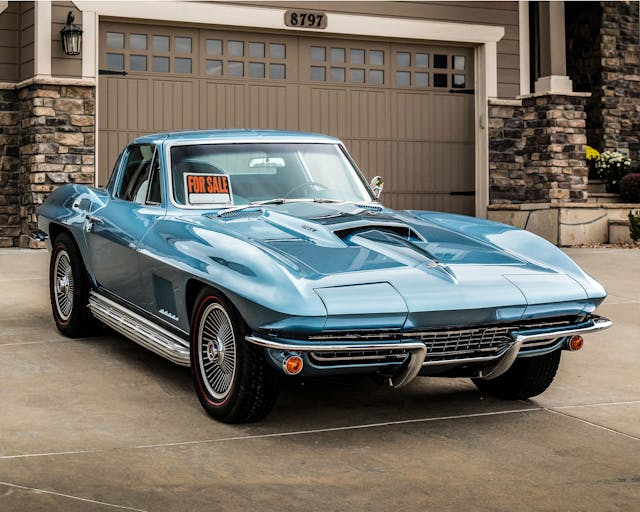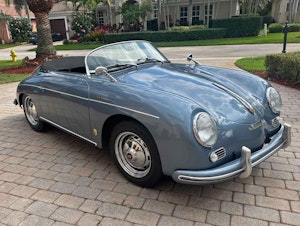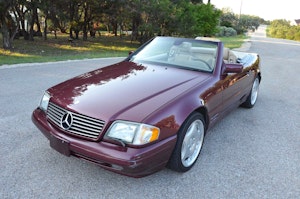Media | Articles
Charted: Buyers aren’t willing to pay what sellers are asking
Across the internet car world, memes abound depicting sellers who “know what they’ve got,” imploring any interested parties not to make low-ball offers. Of course, this is regardless of whether their vehicle is exceptional, or whether the asking price has any bearing in reality.
There’s more than a kernel of truth behind these jokes—we’ve all seen those ads, and during the boom, several consignors I interviewed stated that many sellers were insistent on setting very ambitious and sometimes overly ambitious asking prices. The tactic paid off for many, but one bit of data—the sell-through rate (STR)—shows how buyers have been slowly influencing reduced asking prices as far back as the beginning of 2022.
Sell-through rate is exactly what it sounds like: the percentage of lots that transact successfully in a given auction or time period. Hagerty analysts include both reserve (auctions that have a minimum bid threshold for the car to sell) and no-reserve auctions when tallying up this data, as doing so paints a more complete picture of public auction activity.
What does sell-through rate tell us? Take a look at the chart below. During the market’s ascendancy, buyers were eager to get in the game and willing to meet or exceed the reserve prices set by sellers. This meant more cars found new homes, driving up the sell-through rate. When buyers eagerly pay what sellers are asking, sellers are naturally emboldened to keep pushing prices upward.
That can’t last forever, though, and the 84 percent sell-through rate in the first two months of 2022 would prove to be the highest percentage for combined online and in-person auctions in the last eight years. It was at that point that buyer behavior began slowly exerting a downward influence on prices.
When the buyers’ analysis of a vehicle’s value is less than the expectation of the seller, cars go unsold, reducing the sell-through rate. We see this in the data—the STR dropped quickly through 2022, and though its rate of decline slowed somewhat over this year, it remains on an overall downward trajectory.
The effect of this dissonance between buyer and seller may be immediate for someone who fails to sell a car at their desired price, but the impact on the market is delayed. Sellers take time to reset their analysis of their car’s market value because they rely on backward-looking data and may be hopeful that their car can still fetch an ambitious price. Buyers, on the other hand, look forward to what might happen to the market and are far less willing to move upwards to a seller’s reserve when they know they can go elsewhere or wait for a deal.
When we observe a return to relative stability in the sell-through rate (like the slow movement shown on the graph from 2016 through 2019), we’ll know that the days of exuberant pricing are fully behind us. Till then, the buyers are truly the ones who know what the sellers have.
***
Marketplace
Buy and sell classics with confidence
Check out the Hagerty Media homepage so you don’t miss a single story, or better yet, bookmark it. To get our best stories delivered right to your inbox, subscribe to our newsletters.











Prices are artificially high on many cars. I was wanting an older car but refuse to pay the price.
The global economy is very vol and I expect hard times to come. Prices will drop on many cars.
@Hyperv6 – is there thread you haven’t responded to?? Hahahaha! And 99% of the time you express exactly how I feel, so I don’t need to comment.
I work for a company that engineers & manufactures assembly line equipment for all the major auto manufacturers in North America. Christmas and new years are huge shutdown periods for us. This week we expected to hire 175+ workers to do line improvements. We hired 60. Why? A good chunk of jobs were kicked down the road last minute. We are seeing a big drop off in 2024 1st & 2nd quarter jobs being “pushed out” or just plain cancelled. There is something on the horizon. The auto makers know it, the buyers know it. Not being chicken little but you have to respect the “signs”…
I sold one of my “collector” cars about 18 months ago. I thought no problem I will just replace it with something else as change is good. It turns out the asking prices on anything decent was generally crazy nuts high. I decided to wait it out and it does indeed look like prices are trending towards more realistic levels. BTW new car market trending in same direction.
No one wants to buy collector cars from the beginning of time to 1966…
The people that want to buy 1967 to 1971 cars are only going to live another 20 years and after that your overly priced 1960s Mustangs will be worth nothing.
As a buyer I haven’t been willing to pay the going rate for plenty of classics I love. That is nothing new to me.
Your comment is awaiting moderation. – Never understand why I get afflicted with this.
Bad karma? That is usually my problem. ;<)
No surprise here, not after the grossly inflated bubble in classic and other car prices of 2021…
I’ve been buying and selling for 50 years and I’d say out of 500 cars I paid the asking price a couple of times. Wheeling and dealing is the name of the game has been here forever. I just bought a ’38 Chevy sedan delivery that I know the guy has 100k plus invested. I paid his asking (not 100k) because the car is very well done and with my company signs on the sides, it makes money and is a write-off.
As an AMC guy I see LOTS of inflated prices! AMC/Rambler cars have never boon on the popular side for collectors (with a few exceptions). But people who aren’t real familiar with them get them and try to sell thinking they have to bring a high price since they are so rare. They ARE rare compared to their Big Three (and many foreign) counterparts. But rare doesn’t mean valuable. Popularity drives pricing more than anything else. A limited number and everyone would like to have it? High prices. One of only a few out there, but few really want it? Low price. I often ask some of these people if they had the last known example in the world an no one really wanted it what would it be worth? Since the prices of more popular models have skyrocketed values of AMC/Rambler products have gone up a good bit, as more people with tighter play car budgets consider them as affordable alternatives. Many of us long time fans got into them because they were on the low cost end of the collector car hobby — no more.
Well, I’ve got a mint condition, 65 fastback and I know what it’s worth, it’s easy if you’re under no pressure to sell
I am always surprised that some sellers (albeit not all) refuse to take into account issues their classic may have. Some don’t believe rusty doors or panels, bad transmissions, or less than perfect paint depreciate the value of their classic car or truck. “Caveat emptor” is the long standing mantra of the used car market and as more enthusiasts enter the classic car world, they are leery and choose to keep funds in reserve to make repairs. Used car salesman are still ranked lower than lawyers in the public trust debate.